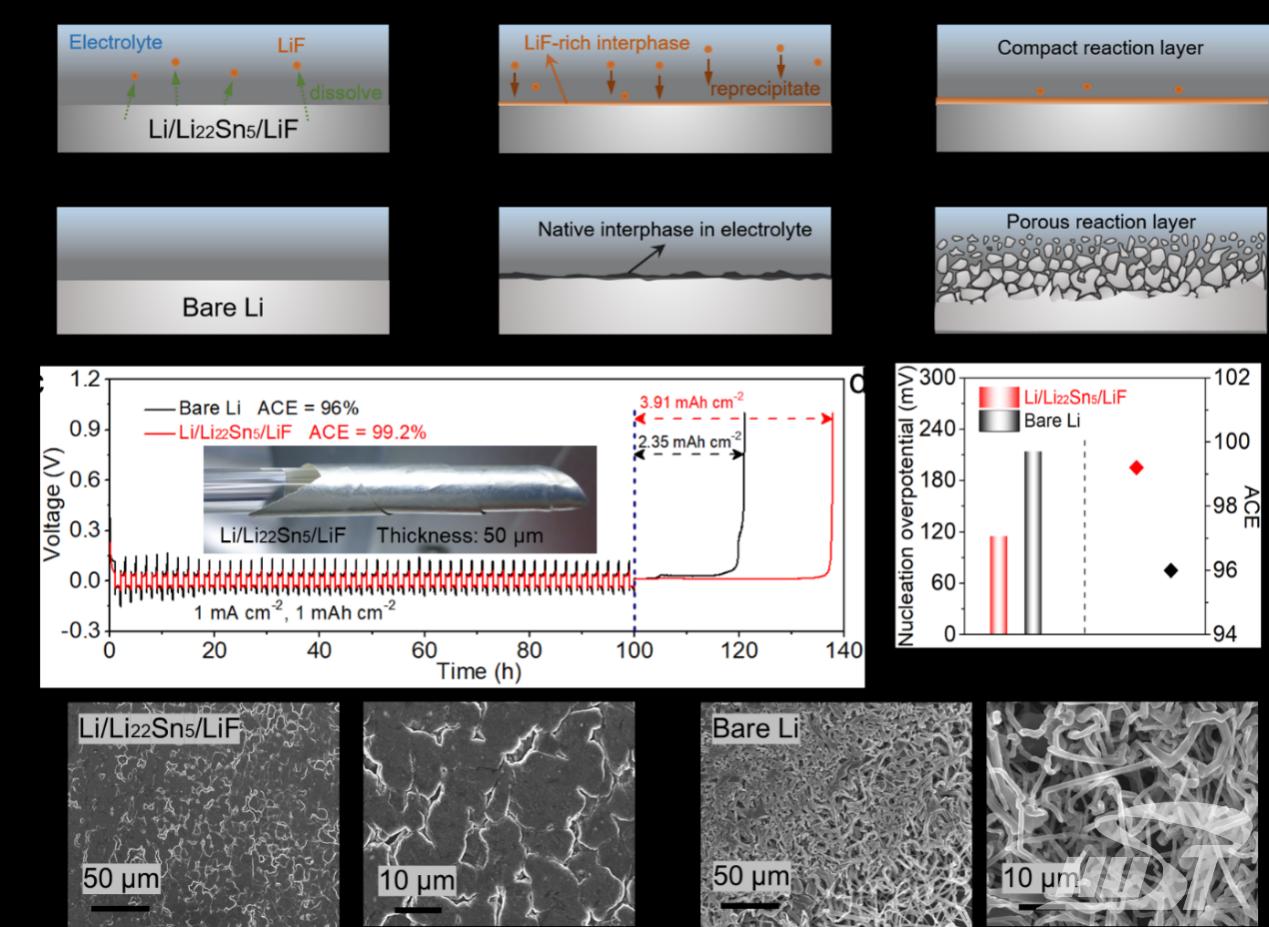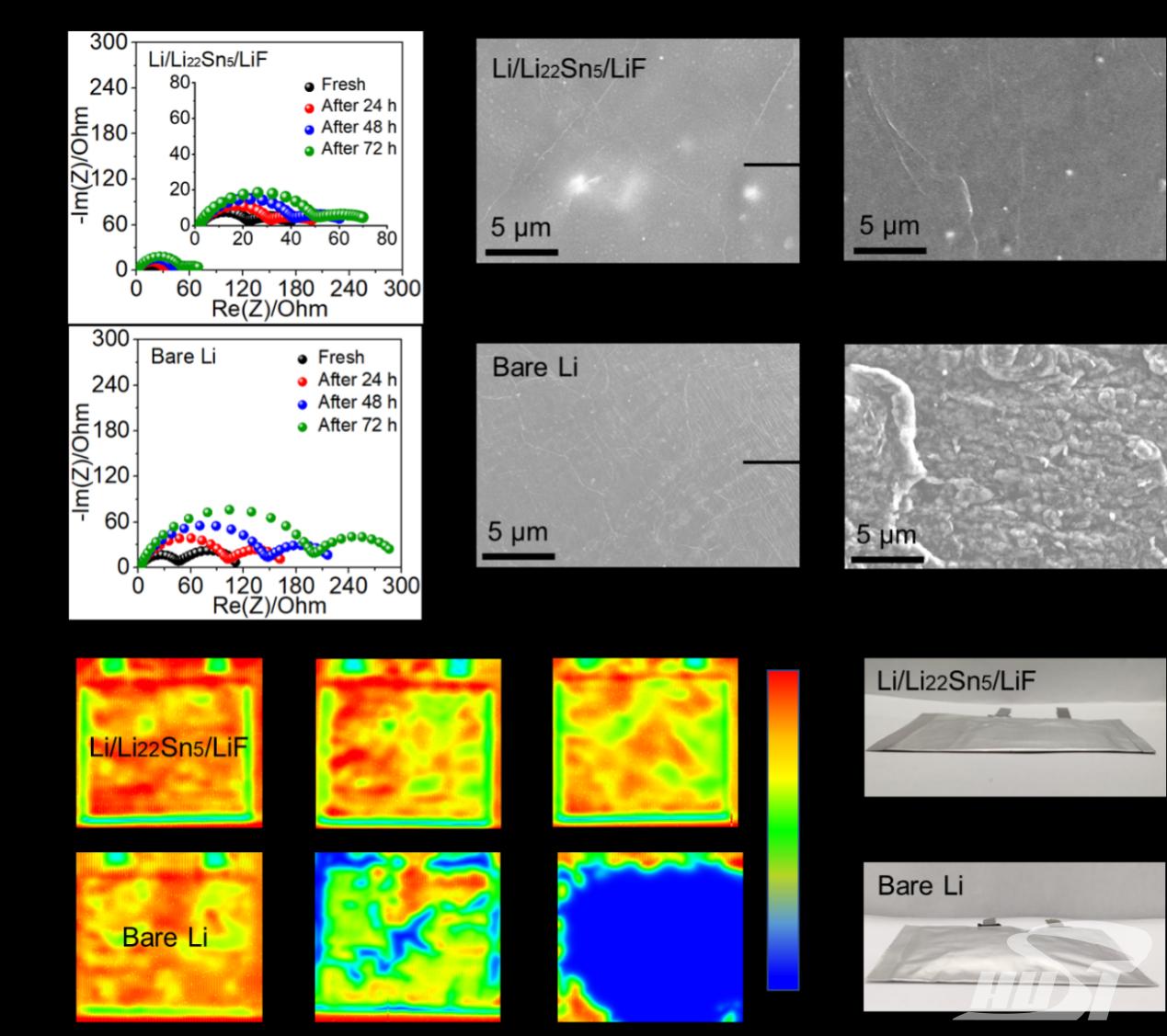Recently, the research group of Professor Sun Yongming, the Chinese supervisor of ICARE, designed a lithium fluoride-rich (LiF) lithium metal composite negative electrode, revealing the LiF dissolving-reprecipitation Li metal interface protection mechanism, dynamic construction of a stable and dense lithium metal fluoride interface, realizing the long cycle life and high coulombic efficiency of thin lithium metal negative electrode. The fluorinated interface can not only suppress the side reaction between the electrode and electrolyte but also promote the flat deposition of lithium metal on the electrode surface, thus achieving a stable electrode structure and improving the cyclic stability of the lithium metal anode. This mechanism of a stable fluorinated interface is different from other mechanisms reported in the concept.

Using the spontaneous reaction between tin fluoride (SnF2) and metal Li, the Li/Li22Sn5/LiF composite lithium metal negative electrode was prepared by repeated mechanical fusion of the two. LiF ultrafine nanoparticles are uniformly distributed in the electrode. LiF is slightly soluble in carbonate electrolyte solvents (such as vinyl carbonate and vinyl fluoride carbonate), and its solution-precipitation equilibrium can precipitate dynamically on the active surface of lithium metal, helping to construct a Lif-rich solid electrolyte interface layer (SEI). In addition, the Li22Sn5 alloy skeleton with high ion/electron conductivity in the composite electrode helps to accelerate carrier transport and inhibit the formation of lithium dendrites. The prepared Li/Li22Sn5/LiF electrode showed excellent electrochemical performance: At 1 mA cm-2 and 1 mAh cm-2, the average coulomb efficiency of the Li/Li22Sn5/LiF composite electrode was 99.2% for 50 cycles in the carbonate electrolyte, while the average coulomb efficiency of the pure Li electrode was only 96% under the same test conditions. At 1 mA cm-2 and 2 mAh cm-2, the cycle life of the Li/Li22Sn5/LiF symmetric battery exceeds 1600 hours, much higher than the 300 hours of pure Li electrodes. The full battery with low negative active material surface capacity/positive active material surface capacity (N/P ratio of 2:1) was assembled by LiCoO2 positive electrode with ultra-thin thickness (80 μm) composite negative matching surface capacity of 4.0mAh cm-2. A high capacity retention rate (up to 91.1% for 100 cycles) is demonstrated in the range of 0.5C charge-discharge rate and wide operating voltage (2.8-4.5V).

Related research has been published with a paper titled Locking Active Li Metal through Localized Redistribution of Fluoride Enabling Stable Li Metal Batteries on Advanced Materials.



